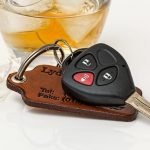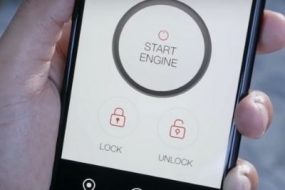
It’s not anybody’s wish to start his automatic car while it’s in neutral but sometimes, situations can make one think of such.
Perhaps, if the gear is stuck and refuses to go into the Park, you may be left with no other option but to start the car while it’s in neutral to see if it will go into the drive or park. So, can you start an automatic car in neutral?
You can start an automatic car in neutral except there is a fault with the neutral safety switch which will prompt the car to start only when it is in Park
Can You Start an Automatic Car in Neutral?
Yes, it is possible to start an automatic car in neutral. In fact, many modern vehicles are designed to allow the engine to start when the gear selector is in the neutral position.
This feature can be particularly useful in situations where the car needs to be moved without engaging a specific gear, or when the transmission is malfunctioning.
To start an automatic car in neutral, the driver simply needs to ensure the gear selector is in the neutral position, usually denoted by an “N” on the gear shifter.
Once in neutral, turning the ignition key or pressing the start button will initiate the engine without the transmission engaging any gears.
Is it Safe to Start an Automatic Car in Neutral?
Yes, it is safe to start an automatic car in neutral but you have to do it with the parking brake engaged.
However, while starting an automatic car in neutral is possible, it’s essential to consider the safety implications of doing so.
One of the primary concerns is the potential for the vehicle to move unexpectedly. When the transmission is in neutral, the car can easily roll if on an incline, posing a risk to both the driver and surrounding objects.
Drivers should exercise caution and engage the parking brake when starting a car in neutral, especially if parked on an incline. The parking brake acts as an additional safety measure, preventing the vehicle from rolling even if the transmission is not in gear.
Additionally, starting a car in neutral should not be a routine practice, as it may lead to inadvertent movement if the parking brake is not engaged.
Benefits of Starting an Automatic Car in Neutral
There are scenarios where starting an automatic car in neutral can be beneficial. For example, if the transmission is malfunctioning, starting the car in neutral allows the engine to run without engaging any gears, enabling the driver to move the vehicle to a safer location or a repair facility.
Moreover, starting in neutral can be useful when jump-starting a car. In this situation, the donor vehicle is typically connected to the recipient vehicle using jumper cables.
Starting the recipient car in neutral ensures that the engine runs without immediately engaging the transmission, facilitating a smoother jump-start process.
What Happens if You Try to Always Start Your Car in Neutral?
Automobile experts kick against starting your automatic car in neutral because of the following:
- During ignition, when the engine is turned on, a process takes place in which fuel is injected into the cylinder (ranging between 500-600 RPM), at this point, the fuel is injected and ignition happens. When you start up your car in neutral, none of these things happen.
- When starting your car in neutral, it takes a lot of stress on each engine part because a fuel injection process isn’t done.
- Starting a car at neutral mounts pressure on parts of the engine to work above their limits and when they do, just the way you burn out when stressed out, the engine also experiences wear and tear.
Best Way to Start An Automatic Car
The best way to start an automatic car is the recommended way by the manufacturers. An automatic car is made with four gears. The drive, reverse, park, and neutral, and the only way recognized by the manufacturer is to start your car when the gear is in Park and then move to drive.
Here is a direct process to start up that automatic car;
- Place your right leg on the left-hand pedal (the brake pedal) and press it down.
- Put the key into the required space and turn it to start or press the start button with your leg still on the brake pedal and start the car
- While your leg is still on the brake pedal, shift the gear from park to drive and slowly release your leg from the brake. When you release your leg from the break, the vehicle will move.
- For every automatic car, if you want speed, you need to mount your leg on the acceleration pedal which is beside the brake pedal.
When Do You Need the Neutral Gear the Most?
You need the Neutral gear in an automatic car when:
When Your Car Is Faulty And Needs A Push
Nobody wants to push a car but if situations warrant you moving your faulty car, shifting your gear to neutral seems to be the best gear to get the job done.
Well, you can’t push the car alone; you will need someone to assist. When someone pushes from the back with exacting force, someone moves the wheel in a direction while the gear is in neutral.
Nobody wants to be in this position, but if you find yourself needing to push a car away from one point to another, you’ll need the neutral gear to get it done.
During A Break Failure
This is quite dangerous. A break failure is a life-threatening situation as it needs to be handled with utmost care to avoid causing severe damage to yourself or the car.
A few people have advised that, when driving and you experience a break failure, you should quickly turn off your car to reduce the speed. But turning off the car is a bad move as it prevents you from being able to control the wheel.
Placing the car in a neutral mode is the best bet as you can control the wheel until you can hit a stop.
The neutral gear is only useful in a car wash or during emergency positions, more reason why it’s rarely used. The most used gear is the drive and reverse.
Final Thoughts
The best way to start up your automatic car is to start it when the gear is in Park and then further move to “drive” but if your car doesn’t start when the gear is in Park but requires you to use the neutral gear to bring the engine alive. Well, you can use it as it has no immediate damage to the car. Making a habit out of it makes your car liable for errors in later times.









